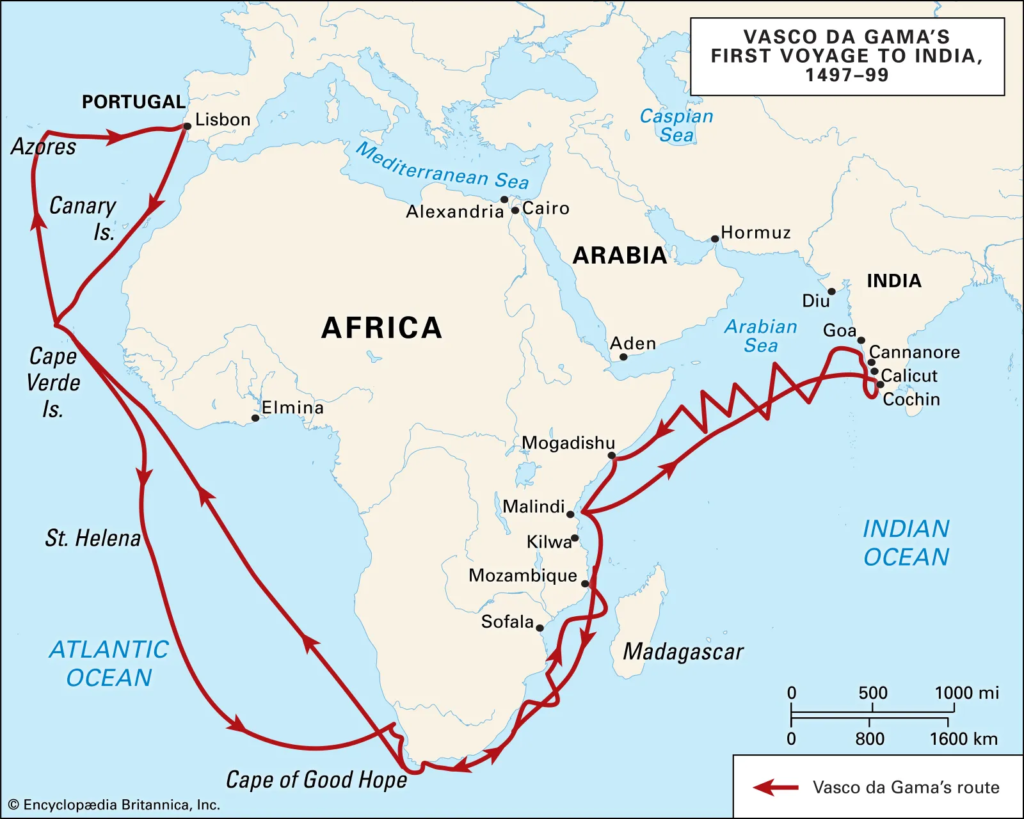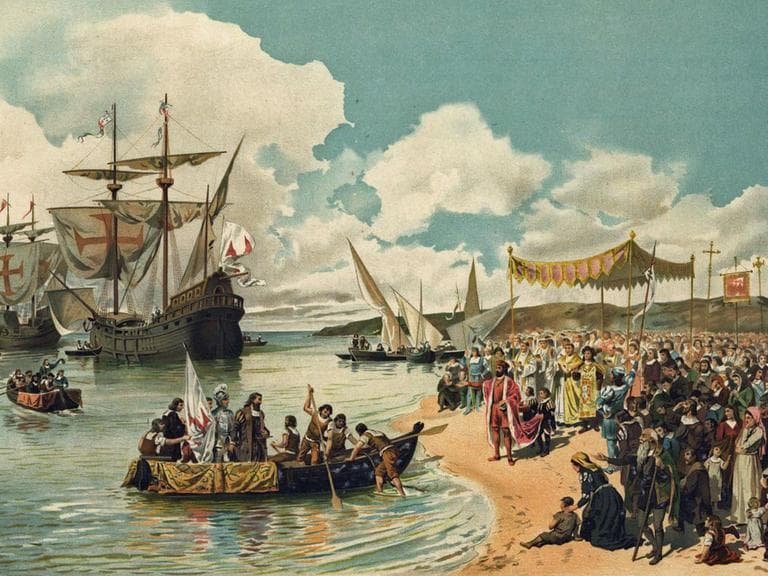The ship that carried Vasco da Gama to India in 1498 was the São Gabriel, a Portuguese carrack and the flagship of Vasco da Gama’s armada on his first voyage to India in 1497–1499. The armada left Restelo near Lisbon on July 8, 1497, and after crossing the Indian Ocean, they reached the harbor of Calicut at the Malabar coast in India on May 20, 1498.
The return journey took over three months, during which many crew members suffered from scurvy. São Gabriel arrived near Lisbon on August 10, 1499, a month after Bérrio under Nicolau Coelho’s command reached Cascais.
Significance of Vasco da Gama’s Voyage to India

Vasco da Gama’s voyage to India in 1498 was significant as he became the first European to reach India by sea, establishing a direct maritime trade route between Europe and Asia. This achievement marked a pivotal moment in history, connecting Europe and Asia through trade and opening up new opportunities for commerce.
Additionally, da Gama’s expedition laid the groundwork for the Portuguese colonial empire in Asia and the Indian Ocean, leading to the establishment of trading posts and economic growth for Portugal.
Despite being celebrated as a hero in Portugal, da Gama’s actions during subsequent expeditions were marked by hostility, including conflicts with local leaders and traders in East Africa and India, which contributed to the expansion of Portuguese influence in the region but also led to controversy and criticism.
Do you Know?
On 20th May 1498, two years after he set sail from Lisbon, Portugal, Vasco da Gama arrived on the Western sea coast of India at Kozhikode (Calicut), Kerala. This was the first time that a European had arrived in India via the sea. Thus, da Gama is credited with the discovery of the sea route to India.
Vasco da Gama’s Arrival – Background

Many sailors and merchants from the west had tried to discover a sea route to India, a land that was famous for spices and other riches since ancient times.
Christopher Columbus, in 1492, had inadvertently discovered the Americas when what he really wanted was to reach the coast of India!
However, a Portuguese explorer Vasco da Gama became successful in discovering the sea route. It would be safe to say that he really did change the world – for better or for worse, the jury is still out.
Goods from India and the Orient were in great demand in Europe. Spices, especially, were much sought-after because they could be used as preservatives to tide over the harsh winters of Europe.
Most of the trade that took place with India was either through the land route or via Arab merchants who took the prized goods from the shores of India to the Venetians who, in turn, sold the spices and other goods to the rest of Europe. The land journey was expensive and the capture of Constantinople by the Ottomans in 1453 reduced the trade of Venice and Genoa greatly.
A direct trade route to India would mean more profits and better access to the goods of the land. It would also give the country a monopoly over the lucrative spice trade.
King Manuel I of Portugal sanctioned the voyage to India and appointed da Gama as the expedition’s leader and as the captain of the Armada.
The expedition comprised 4 ships and 170 men. The ship captained by da Gama was called São Gabriel. The others were São Rafael, Berrio and another unnamed supply ship.
The fleet departed from Lisbon on 8th July 1497. The plan was to go around the continent of Africa and then reach India from thence. The crew made contact with the tribesmen at St. Helena near the southern tip of Africa. The voyage was a difficult one and many of the members of the crew got affected with scurvy.
Then, they went onto Mozambique and then anchored at Malindi, East Africa. It is believed that an Indian from Kenya helped da Gama with the directions to the subcontinent and also informed him about the monsoons.
On May 20th, 1498, da Gama reached Kappad, near Kozhikode, which was then part of the Kingdom of the Zamorin (Samuthiri Raja) of Calicut.
Although the foreigners were welcomed with hospitality which included a grand procession, the Zamorin, Manavikraman Raja was unimpressed with the gifts brought by da Gama which included some clothes, hats, corals, sugar, oil and other things. The Indians wondered why there was no gold or silver!
The Muslim merchants in Calicut were naturally annoyed at having a potential competitor in the trade of the region. The Portuguese were not successful in establishing a commercial treaty with the Zamorin, although they did make a handsome fortune from the sale of spices they brought from India.
The relation between the Zamorin and da Gama was strained very early on because of da Gama’s refusal to pay the routine customs duties. They left India in August 1498 and arrived in Malindi in January 1499. The crew was in bad shape as half of the men had died during this return voyage.
From here, only 2 ships sailed back to Europe. They reached Lisbon on 10th July 1499.
Da Gama was given a hero’s welcome and even given the title ‘Dom’ by the king. The expedition had brought in cargo which was valued at more than 60 times the expedition’s cost.
There would be many more Portuguese armadas to India which changed the face of the subcontinent in more ways than one.
From a trading partner, Portugal went on to colonise parts of India. Their biggest colony in India, Goa would remain under Portuguese rule for over 450 years, starting in 1505 and ending only in 1961 after the Indian army liberated the state.
Although the Portuguese were suppressed by other European powers in the subcontinent, (where finally, the British ended supreme), this discovery of the sea route to India is often regarded as the single most important discovery in what is known as the Age of Discovery.
The European colonisation of India had its early origins after this watershed moment.
You may also like,
- Everything about River of lights – History, Evolution & Facts
- The History and Symbolism of Sea Glass Rings: What Do They Represent?
- Top 5 Most Beautiful Sailing Ships in History

